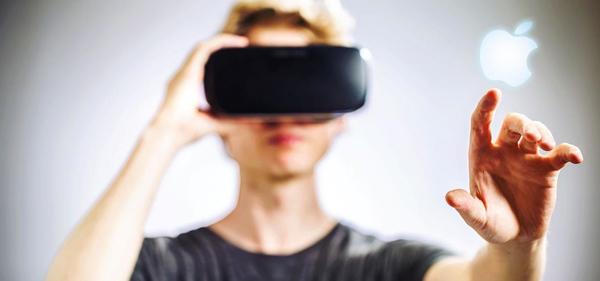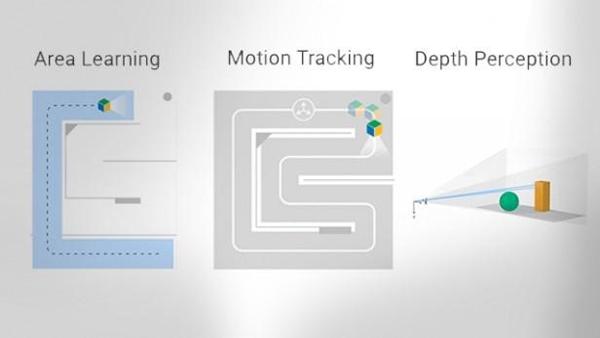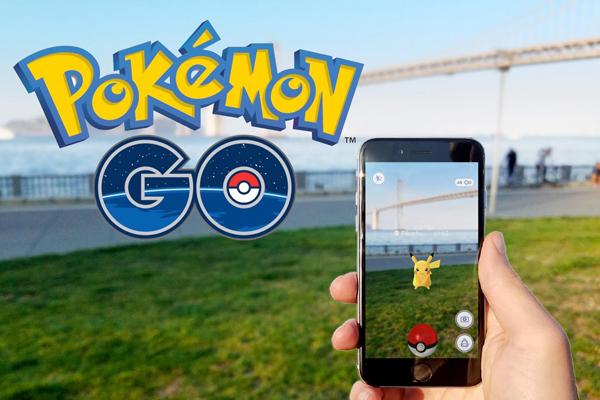When the vast majority of mobile phone manufacturers are still pursuing rear dual camera, some people have begun to study AR mobile phone with great concentration.
At the just-concluded Consumer Electronics Show in the United States, Asustek released a new ZenFone AR phone with a 5.7-inch 2K screen, a Snapdragon 821 processor, and 8GB of memory, running a ZenUI VR 3.0 system based on Android 7.0 Nougat customization.
Behind the flagship configuration, ZenFone AR's biggest feature is the use of ASUS's 2300W-pixel TriCam triple lens system for AR augmented reality, which supports motion tracking and depth of field detection.

The ASUS ZenFone AR is the second model on the Google Tango platform. In the middle of last year, the domestic manufacturer Lenovo was the first to introduce the Phab2 Pro, the first production model of the Tango platform.
At the same time, Apple also announced plans to enter AR. Before Cooke had publicly demonstrated AR technology, and now there are well-known bloggers broke the news, Apple is working with Carl Zeiss to develop AR glasses, and use the iPhone to connect wirelessly.

VR, AR hot today, AR applications on the phone is not the next interactive revolution? We analyze from the following perspectives.
First understand what is augmented reality?

Augmented Reality, abbreviated as AR, is a technique that calculates the position and angle of a camera image in real time and adds a corresponding image. The goal of this technique is to set the virtual world in the real world and interact on the screen.
Don't mix with VR virtual reality here. Simply put, the scenes that VR sees are all false. You observe or operate in a virtual world. AR sees part of the real part of the scene virtual and brings the virtual information into the real world.
In all AR technologies, Google's AR project is well-known. Three years ago, Google’s “ATAP†division quietly launched Project Tango and launched an Android prototype. In addition to the functions that a typical smart phone has, the prototype is equipped with a series of cameras and sensors to record the 3D environment around the user in real time.
We generally discuss the AR of smart phones, mainly in the following directions: Identifying objects through multiple cameras; tracking targets; more precise navigation positioning, especially indoor; 3D depiction of the surrounding environment. Project Tango has a clear advantage in its ability to detect and detect a wide range of areas.
Specific to the principle, Project Tango detects the surrounding environment through three core functions:
1, sports tracking. Mobile phones can use the built-in accelerometers, gyroscopes, and other sensors to sense the current position;
2, in-depth identification. Can detect the surrounding environment form, here use Intel's RealSense 3D camera technology, through this technology, Project Tango can capture 3D objects more accurately;
3, restore the image. Rely on what Project Tango is developing to map the surrounding environment and area.
The development of AR mobile phones depends on hardware and software. Hardware includes mobile chip processors, camera modules, and sensors. At present, chip giants such as Qualcomm and Intel have all joined the research and development of the AR mobile chip field to improve AR's experience on mobile phones from the bottom of the hardware.
If the hardware determines whether the AR technology can be combined with the mobile phone, the software directly affects the eligibility of the user experience. However, at present, the AR ecological architecture has not been fully established. Its development model is similar to the VR one step ahead, and it lags behind the ecological construction of VR.
Like VR, AR also started with games

If Pokemon Go's AR game is popular all over the world, it may be that mobile augmented reality has long been forgotten. The AR technology had been there long ago, and some AR augmented reality games were also introduced, but the functionality was very simple. Pokemon Go’s overnight fame brought fire to Augmented Reality and made it easier for vendors to find partners.
The game gives AR Augmented Reality a good entry point. In the early stages, relying on this kind of game without much technical content can quickly win over users. For example, Pokemon Go, through map data records, players only need to walk on the street and take pictures of various Pokémon.
Some of the more advanced games can use technology to allow users to interact with virtual elements in the real world. This is not only the interaction in physical space, but the communication between different people through geographic tracking. Some representative games also include Hot Wheels racing game, Slingshot slingshot game and Towers for Tango simulation business game.
Although the game took fire to AR to a certain extent, like VR, this is not the end that Google wants to see. Google also hopes that augmented reality can be applied to more fields and devices, allowing users to enjoy the convenience of life.
What else can an AR mobile phone do?

Previously, Nokia had tried augmented reality technology on its own Lumia mobile phone and launched an application called Street View, which displays nearby restaurants, gas stations, hotels and so on according to geographical locations. However, there was no way to accurately locate the depth-of-field detection lens and the dynamic capture lens, which was the biggest flaw at the time. Therefore, it did not become popular afterwards.
As technology continues to mature, the AR application landscape has changed.
For example, for example, you can measure and record the dimensions of a region or space using this AR mobile phone. This means that when you want to decorate your home, you don't need to use the ruler to measure it anymore. You can automatically measure the distance between the furniture and the wall by holding the AR phone.
In the medical field, Project Tango can help people with reduced vision to improve their sensing capabilities and send different reminder sounds by testing the surrounding environment.
In the field of commercial applications, Project Tango can be used in the real estate field to create indoor maps to the Internet for users to download and view. It can also be used in a variety of large shopping malls, airports, libraries, etc. to provide some kind of consulting information.
Recently, there is news that, in order to increase the use of AR, Google has cooperated with a number of museums. Through the use of AR mobile phones, visitors can see some of the museum's internal 3D images, such as dinosaur fossils, limestone relief color and so on.
AR is full of confidence but it is necessary to solve these problems

Although AR technology represents the future of mobile interaction, there are still some thorny problems to be solved.
The first thing to say is the issue of less content resources.
Just mentioned some application scenarios, compared to AR application is still mainly in the game development stage, and the uneven quality of the application also affects the use experience.
In addition, AR technology is very test the hardware configuration of the mobile phone, will increase the power consumption and heat of the mobile phone itself.
The AR generates a lot of resource consumption when performing the target, position recognition tracking, and visual calculation processing. For current mobile CPUs and GPUs, support will be more difficult. In addition, the camera's depth of field detection range and the range of dynamic capture are not enough. This will cause the user to experience the AR screen when the application is not fine and the positioning is inaccurate.
The last is the hidden danger of information security.
Although AR's technology solves the user's needs in some areas, it also exposes personal location data, identity data, etc. Taking into account the open source nature of Android phones, there is clearly a risk of data leakage. When Pokemon Go broke out in the world, the security information department stepped up to explicitly prohibit employees from installing such games.
In short, the combination of AR and smart phones is indeed to give consumers a better way of human-machine interface interaction, but also let the mobile phone innovation have more imagination. It can be foreseen that in the future, with the common promotion of hardware level, application scenarios, and improvement of security issues, the large-scale popularity of AR mobile phones is not out of reach.
The outdoor patch cable is four pairs of UTP/FTP/SSTP CMR cable, suitable for outdoor aerial and pipe, can prevent moisture intrusion.
The performance meets the requirements for the patch cables in ANSI/TIA/EIA-568B.In order to make the twisted pair in the movement of the wire will not break, except for the skin protective layer, the external PE also has a certain toughness.
At the same time, in order to facilitate the joint production and reliable connection, copper core should not be too soft, not too hard, too soft is not easy to joint production, too hard is easy to produce joint fracture;With the technological innovation, double-layer sheath can solve more technical problems of weak current system more effectively.

Outdoor Network Cable,Outdoor Ethernet Cable,Cat6 Outdoor Cable,Cat6 Shielded Ethernet Cable Network Cable
Shenzhen Kingwire Electronics Co., Ltd. , https://www.kingwires.com